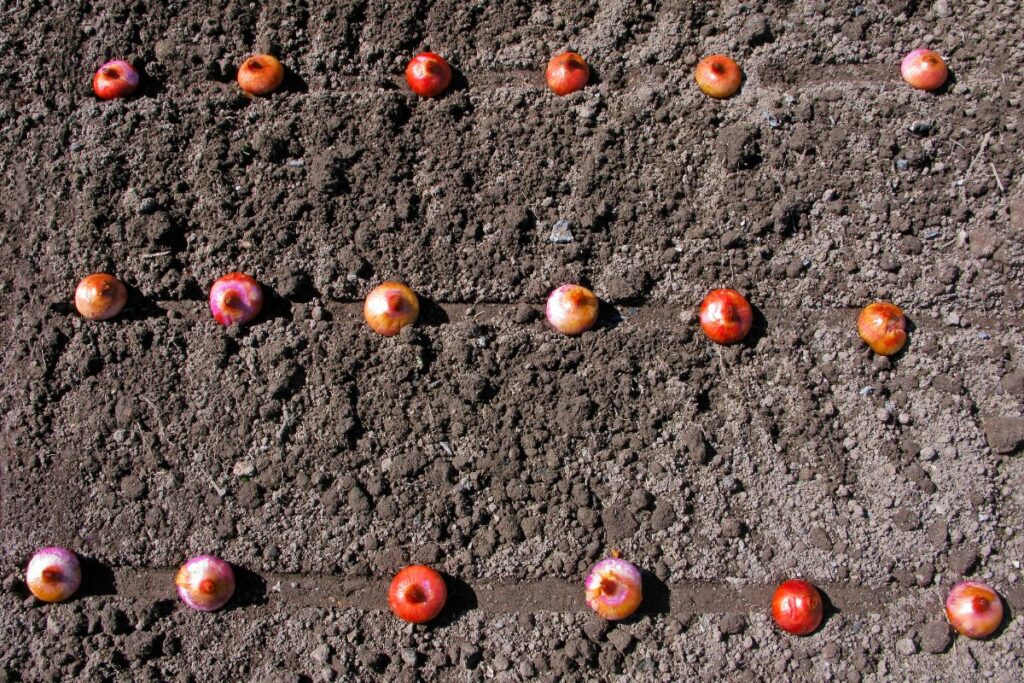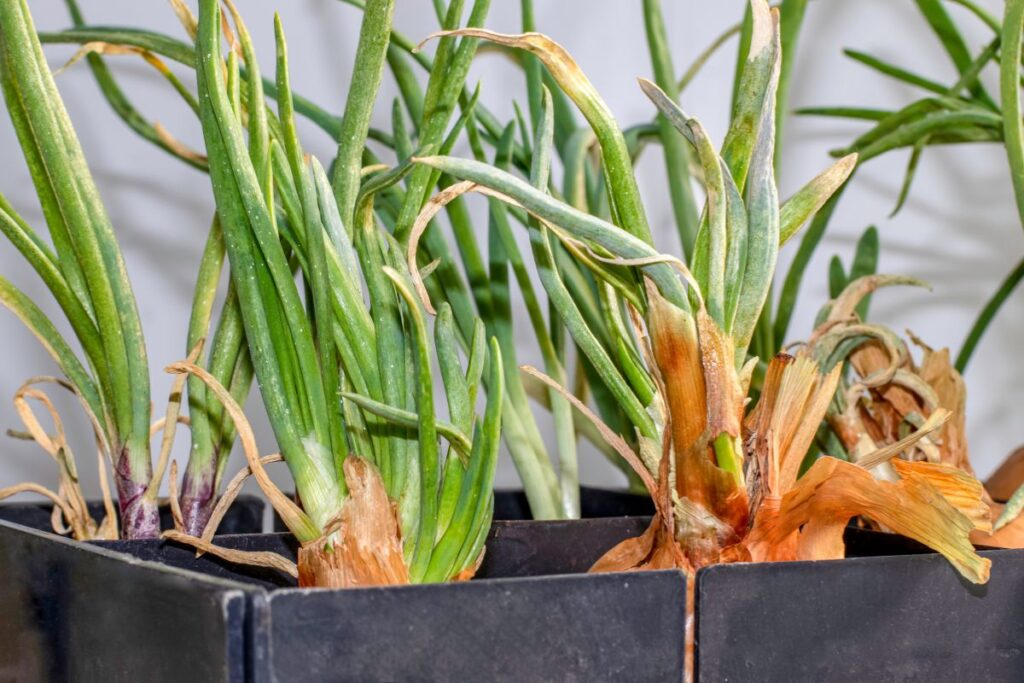Disclaimer: Our editors have used AI to create or enhance parts of this article and some images. All content has been fact-checked by our team to ensure accuracy.
Tired of store-bought onions?
Grow your own endless supply at home!
Follow these 10 essential tips and enjoy fresh onions all year round.
Ready to become an onion-growing pro?
Let’s get started!
1. Select the Ideal Variety

There are several onion types to consider: yellow, red, white, shallots, and scallions. Identify the climate of your region and select a variety that thrives there. Southern areas favor short-day onions, while northern regions benefit from long-day onions. If your region falls between these zones, opt for intermediate-day onions for optimal growth.
2. Begin with Quality Seeds or Sets
Choose top-notch seeds for a wider range of varieties and better disease resistance. If you prefer a quicker and more convenient option, consider using onion sets, which are small, dried bulbs. Make sure to obtain seeds or sets from reputable suppliers to ensure robust growth and a productive harvest.
3. Prepare the Soil Effectively
Onions thrive in well-drained, fertile soil. Enrich your plot with compost or aged manure before planting to improve fertility. Aim for a soil pH between 6.5 and 6.8. Ensure the soil is well-tilled and free from compaction to allow proper root development.
4. Space Plants Appropriately

To allow your onions to reach their potential, plant seeds or sets with 4-6 inches of space between them. Arrange your rows 12-18 inches apart. This method promotes good air flow and growth space, making it easier to manage weeds.
5. Maintain Consistent but Moderate Watering
Onions thrive with steady moisture, particularly in their early growth phases. Too much water, however, can cause root rot and diseases. Aim for approximately an inch of water weekly, factoring in rainfall.
6. Use Mulch for Moisture and Weed Control
Apply mulch like straw, shredded bark, or compost to your garden. This practice helps keep the soil moist and regulates its temperature. Additionally, mulch acts as a barrier against weeds that can steal nutrients and water from your onions.
7. Fertilize as Needed
Feed your onions with a balanced nutrient mix, prioritizing phosphorus, potassium, and nitrogen. Prepare the soil before planting, and periodically apply a nitrogen-based fertilizer throughout the growing season to promote robust development.
8. Monitor for Pests and Diseases

Watch for any symptoms of pests or diseases. Common issues in onions include onion maggots, thrips, and fungal infections such as downy mildew and blight. If you see any signs of trouble, use suitable organic or chemical treatments immediately.
9. Harvest at the Optimal Time
Onions reach their peak when their tops start to fall over and turn yellow. Gently lift the onions and remove any loose soil. Cure them in a warm, dry area with good air circulation for a few weeks until the outer skins become papery.
10. Store Onions Correctly
To keep onions in optimal condition, find a cool, dry place for storage. Braiding and hanging them is an effective traditional method that promotes good ventilation. Using mesh bags or bins with plenty of airflow is another excellent option to prevent moisture build-up. Well-stored onions can last for several months, providing you with a steady supply until the next harvest.
Following these storage tips can elevate your onion-growing experience. With some diligence and care, you’ll not only enjoy a plentiful harvest but also save money and reduce trips to the grocery store. Prepare to savor the aroma and flavor of homegrown onions, filling your garden with success.
thanks Alot